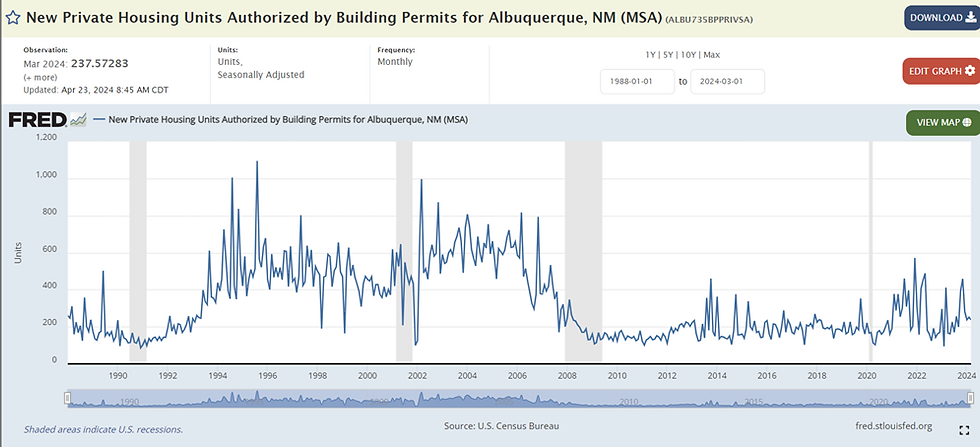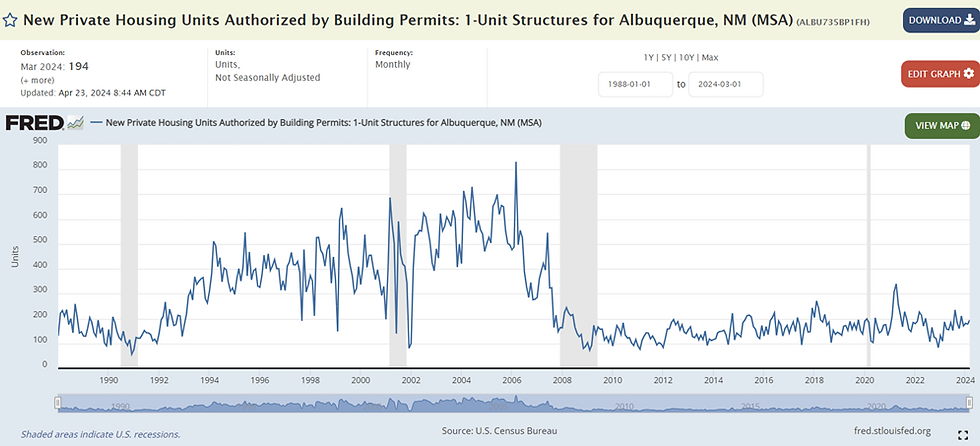How Can We Address the Housing Crisis in Albuquerque?
- Felipe Rael

- May 10, 2024
- 3 min read
Sol Housing has been creating exceptional housing that promotes household stability and vibrant communities for over 30 years. As a Community Housing Development Organization (CHDO) established in 1993, we are committed to housing that is affordable to all citizens regardless of income or household size. Our multifamily housing communities have revitalized neighborhoods and improved housing stability for hundreds of residents.
The housing crisis in Albuquerque is well documented by the Urban Institute’s 2020 report and the work of the Homeless Coordinating Council. The City of Albuquerque has documented its strategies for for addressing the crisis and this past year, the mayor introduced the Housing Forward plan to create an additional 5000 housing units.
However, current funding resources leveraged specifically for the City of Albuquerque (HUD pass-through funding for HOME and WFHTF) only create at most 150 units a year, nowhere near the gap of over 15,500 units just for residents earning 50% of Area Median Income or less. We are deeply concerned about this unprecedented and widespread crisis that affects all residents of Albuquerque. As a CHDO, our capabilities are limited by the current funding sources compounded by the rising cost of land and construction.
The graph below illustrates building permits for multifamily development tracked by the number of housing units built in Albuquerque between 1988 to March of 2024. You can see that housing development dropped during the recession in 2008 and continued at these low levels until 2020 when it became apparent that we were in a housing crisis. When ARPA funds came available, we experienced a modest increase, but containment of inflation and high interest rates have pushed development back down to levels built in the early 1990’s (750 housing units a year). Meanwhile, our population in the MSA has grown by over 200,000 new residents and median home prices have increased from $75,000 to $283,000.

Single–family home construction has followed a similar pattern to multifamily construction. Construction of housing units drop off starting in 2008 and remained consistent at low levels until 2020 when we start to see a small and slow increase with a spike in March of 2023. Currently, about 250 single-family homes are built monthly, the same as 1993.
Without a strong and lasting effort to increase housing development, we will continue to under-build and not meet demand, thus keeping us in the housing crisis and homelessness epidemic we are experiencing now.

Research supports the benefits of having safe, stable, and affordable homes. Students do better. Patients are healthier. People can more readily escape poverty and homelessness. The economy is healthier. And we are all safer.
An increase in supply reduces rent pressure, increases the amount of housing available for employees of emerging industry leaders, and provides mobility for residents to upgrade their current housing which in turn frees up more affordable units for residents struggling to maintain housing. The benefits of improved housing stability help our economy; business owners and employees will have the housing needed to relocate and/or grow their businesses, and increased housing stability can dramatically improve health outcomes for families and seniors, whereas the criminalization of homelessness will only increase barriers to accessing housing and employment without any contribution to a permanent solution.
We urge you to support efforts at the city and state level to prioritize the creation of affordable housing with the city's upcoming budget approval. This commitment will be instrumental in addressing the pressing housing needs of our community, have a significant positive impact on our city’s economic development and job growth goals, and provides a permanent solution to homelessness and housing instability in Albuquerque.



Where is Governor Grisham leadership on this crisis? Where is our NM legistature action on this crisis? What about our democrat congressional delegation and Administration? How any of these public servants are protecting us SENIORS LIVING ON SS from rapacious greedy landlords and out of state private equity firms buying our buildings and increasing our rents so that they can put us out and turn our apartments into short term rentals? A year ago my apt rented for $560 then it was increased to $600, then in Aug 2023 to $700 and in July 2024 my rent will be $940. You do the math! Governor Newsom Signs Package to Streamline Housing and Expand Tenant Protections in California
Published: Oct 11, 2023